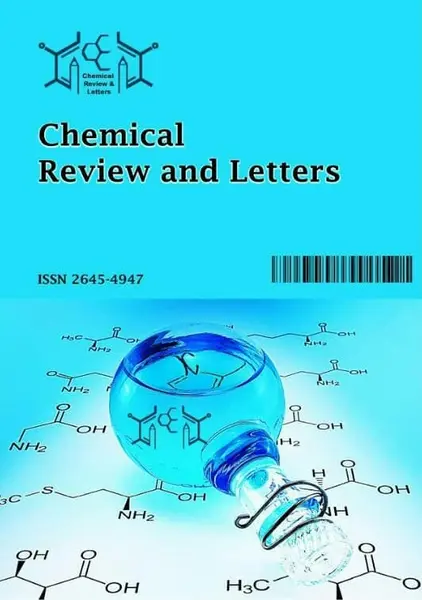-
detail synthetic study of infrared fluorescent dyes: design, synthesis and chemical properties of their photodynamic therapy probes
جزئیات بیشتر مقاله- تاریخ ارائه: 1401/11/13
- تاریخ انتشار در تی پی بین: 1401/11/13
- تعداد بازدید: 319
- تعداد پرسش و پاسخ ها: 0
- شماره تماس ژورنال: 989360221112
detail synthetic study of infrared fluorescent dyes: design, synthesis and chemical properties of their photodynamic therapy probes
dipyrromethene boron difluoride (bodipy) derivatives can be used as effective photosensitizers (ps’s) to eradicate a broad spectrum of microbes that threaten the global population health. moreover, these compounds could be used in diagnostic or therapy, controlling the balance between the fluorescence emission and the photodynamic activity. there is still much work to be done in the search for ideal ps’s with applications in photodynamic therapy (pdt). to effectively use near infrared region bodipy dyes for labelling during biological analyses, or as biomarkers in biomedical applications such as imaging diagnosis, a hydrophilic character is usually required.
it was found that the introduction of the strong electron-withdrawing group at the meso position in the bodipy skeleton was responsible for the drastic bathochromic shift in the absorption spectrum. several studies on the development of small molecule fluorescent probes have been performed with short wavelengths and with poor water solubility. there should be new investigations to obtain more information on the mechanisms of photodynamic action relating to cell damage and experiments in vivo infection models.
in order to understand the effect of the substituents, a predictive quantitative structure-activity relationship (qsar) regression model, based on theoretical holistic molecular descriptors as developed. an even better fluorescent probe would combine the photostability of the bodipy group with a chromophore that absorbs at longer wavelength that makes for better light penetration in cells and tissues. in this review, we will summarize ideas on different wavelengths and hydroelectric abilities through modifications of molecular structures of the biological probe molecule. bodipy’s materials and chemical modification methods for modulating the optical properties presented here could be versatile for developing efficient photo-responsive bio-related materials to control the biological activities and efficient quenchers on the biotechnological assays with labelled biomolecules.
حوزه های تحت پوشش ژورنال
مقالات جدیدترین رویدادها
-
استفاده از تحلیل اهمیت-عملکرد در ارائه الگوی مدیریت خلاقیت سازمانی و ارائه راهکار جهت بهبود
-
بررسی تاثیر ارزش وجوه نقد مازاد بر ساختار سرمایه شرکت های پذیرفته شده در بورس اوراق بهادار تهران
-
بررسی تأثیر سطح افشای ریسک بر قرارداد بدهی شرکت های پذیرفته شده در بورس اوراق بهادار تهران
-
بررسی تأثیر رتبه بندی اعتباری مبتنی بر مدل امتیاز بازار نوظهور بر نقد شوندگی سهام با تأکید بر خصوصی سازی شرکت ها
-
تأثیر آمیخته بازاریابی پوشاک ایرانی بر تصویر ذهنی مشتری پوشاک ایرانی (هاکوپیان)
-
بررسی نقش خودکارآمدی کنترل احساس، علائم افسردگی و استرس پس از سانحه بر خطر ابتلا به خودکشی در میان نوجوانان شهرستان کرمانشاه
-
برآورد حدود آتربرگ رس های مورد استفاده در هسته رسی سدها با استفاده از شبکه های عصبی مصنوعی (مطالعه موردی: منبع قرضه هسته رسی سد مخزنی آغ چای)
-
جهت های جغرافیایی مطالعات اجتماعی پایه چهارم ابتدایی
-
تعیین فشار، تنش موثر و شتاب در راستای قائم تونل مدفون در خاک ماسه ایی تحت تاثیر انفجار سطحی
-
on the behavior of nitrogen in a low-ni high-mn super duplex stainless steel
مقالات جدیدترین ژورنال ها
-
مدیریت و بررسی افسردگی دانش آموزان دختر مقطع متوسطه دوم در دروان کرونا در شهرستان دزفول
-
مدیریت و بررسی خرد سیاسی در اندیشه ی فردوسی در ادب ایران
-
واکاوی و مدیریت توصیفی قلمدان(جاکلیدی)ضریح در موزه آستان قدس رضوی
-
بررسی تاثیر خلاقیت، دانش و انگیزه کارکنان بر پیشنهادات نوآورانه کارکنان ( مورد مطالعه: هتل های 3 و 4 ستاره استان کرمان)
-
بررسی تاثیر کیفیت سیستم های اطلاعاتی بر تصمیم گیری موفق در شرکتهای تولیدی استان اصفهان (مورد مطالعه: مدیران شرکتهای تولیدی استان اصفهان)
-
رویکرد داده کاوی برای برنامه ریزی فرآیند مبتنی بر دانش
-
بررسی نقش رهبری معنوی بر چابکی سازمانی
-
بررسی تأثیر مالکیت نهادی بر نوسان پذیری قیمت و بازدهی سهام
-
بررسی پیش آینده ای برداشت از سیاست سازمانی
-
structural behavior of pipelines buried in expansive soils under rainfall infiltration (part i: transverse behavior)


سوال خود را در مورد این مقاله مطرح نمایید :